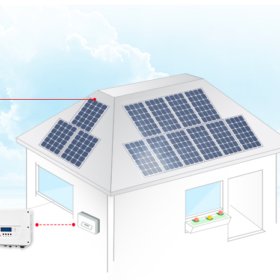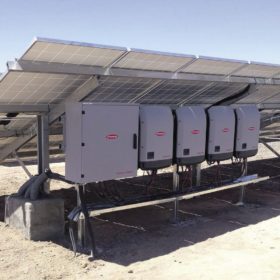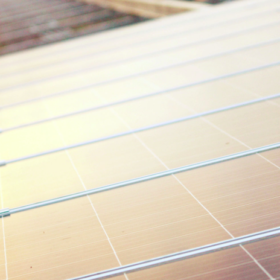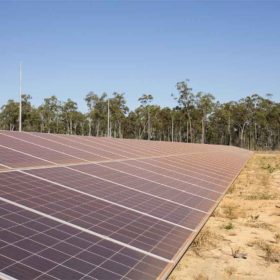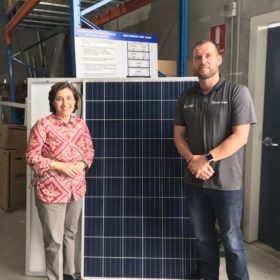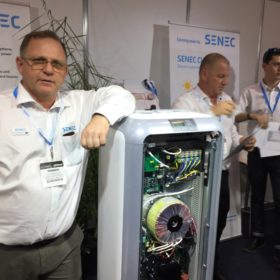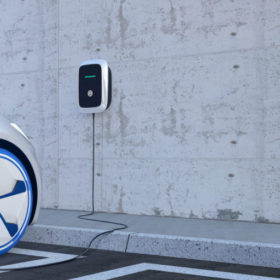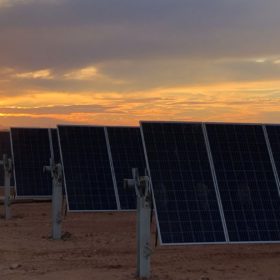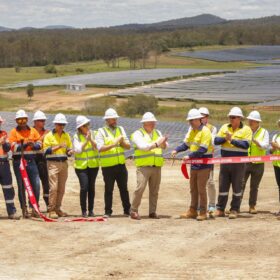OK Google, what is SolarEdge’s energy vision?
SolarEdge has recently purchased an Italian EV system manufacturer, a South Korean battery maker, an Israeli UPS producer, internally developed a virtual power plant grid service, and now they’re working with Google to integrate energy management tools into Google Assistant.
Fraunhofer IKTS unveils alternative for PV home storage based on sodium-nickel-chloride
At an energy storage fair in Dusseldorf, researchers will present a ceramic high-temperature battery. Storage costs using sodium-nickel-chloride battery cells are said to be 50% lower than those of lithium-ion.
Long read: Delaying derating
High solar irradiance and few cloudy days are ideal for solar. Fine dust and extreme heat is not – particularly when it comes to power electronics. As the distributed generation market segment emerges in the MENA region, it’s a challenge that inverter suppliers are grappling with.
Obton enters Australian PV marketplace through JV partnership
Danish renewables investor and asset manager Obton has set up a joint venture with Australian developer Torus with the goal to buy, develop and build solar projects Down Under. With several projects already in its pipeline, the company says it has faith in the market despite policy uncertainty.
Solar PV capacity additions triple in 2018 amid utility-scale boom
Australia’s solar PV capacity additions tripled in 2018, as its rooftop solar fleet continued to set new records high and big PV experienced an unprecedented growth. While stabilization in electricity prices could lead to a slowdown in the rooftop solar segment in all states except Victoria, it is unlikely to result in a noticeable decline in sales in 2019. Large-scale solar PV is in line for over 3 GW this coming year, while small power stations up to 5 MW will also get their time to shine.
Victoria’s Solar Homes program boosts jobs and businesses
In addition to its primary goal of driving down energy bills, the Victoria Labor government’s major push for the rooftop solar deployment across the state in the form of rebates and interest-free loans granted under a $1.24 billion Solar Homes program has had a positive effect on local industry in the brown coal-dominated Latrobe Valley.
Interview: Senec aims to build retailer, installer relationships in Australian expansion
Seeing the Australian residential battery storage market as poised to take off, Senec’s Jaron Schächter, one of three Managing Directors of Senec Germany says that it looks to build “strong partnerships” as it continues to expand into market.
Volkswagen is all set to become a green energy supplier
The German car giant has created Elli, a subsidiary that will provide green power and charging solutions for the EV sector. Volkswagen – still haunted by the diesel emissions scandal – says it wants to make mobility sustainable.
New products contribute to another record year for sustainable finance
BloombergNEF figures show financial vehicles linked to environmental and/or social benefits amounted to $247bn worldwide in 2018. The US led the way, almost entirely because state-backed mortgage provider Fannie Mae issued $19.8bn worth of green home loans.
900 MW solar farm approved for Riverina region
In the final days of 2018, the NSW government gave its tick of approval for the construction of the state’s largest solar farm to date. The approval rounded off a year that saw a flurry of utility-scale solar construction activity and an unprecedented number of big solar additions in the state.
